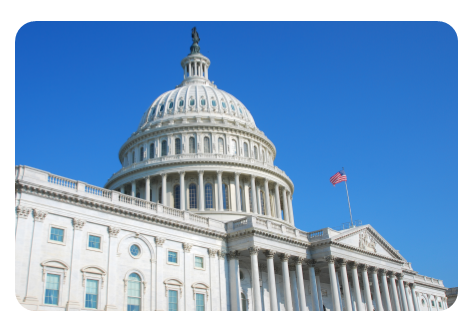- The US Fed’s 25 bps rate hike announced last week may be the last in this cycle
- Latest inflation and unemployment figures also suggest that any slowdown will be mild
- However this good news is marred by the looming political showdown on the US’s debt limit legislation
Good news on inflation and interest rates
As expected, the US Fed announced last week that it is raising interest rates by another 25 basis points, its ninth rate hike in a row. Few would have imagined in March 2022 that interest rates would ratchet up from near zero to 5 percent in just 14 months. This is the highest level in 16 years.
However, the Fed’s determination to bring inflation under control seems to be paying off. The annual inflation (Consumer Price Index) data for March was 5 percent, a decline from February’s 6 percent, and the 9.1 percent high seen in June 2022. Similarly, annual personal spending (as measured by the Personal Consumption Expenditure index) also fell to 4.2 percent in March from 5.1 percent in February.
As such, while core inflation (i.e. price rises excluding food and energy) is looking stickier, the Fed seemed to signal a pause in further rate hikes in order to take account of the “lags with which monetary policy affects economic activity and inflation”.
Subdued market reaction
Year-to date, US equities still shine, with the S&P 500 up by close to 7 percent and the NASDAQ Composite by 16 percent. But investor response to the news that interest rates may be at a peak was lukewarm. While the S&P500 index rose cautiously earlier in the day, it closed the day down by 0.7 percent.
Some analysts blame the subdued response on investor disappointment that the Fed gave no indication of a near term pivot (i.e. interest rate cut). However, it is also clear that the looming debt ceiling showdown between the Republican and Democratic parties is starting to weigh on investor sentiment.
Why is this debt ceiling crisis different?
The US is no stranger to such crises, given that rules limiting how much the federal government can borrow to fund its spending has been in place since 1917. Nor is it unusual for the US Congress to raise this limit – it has done so 78 times since 1960.
In recent years however, this has become a major battleground between the Republicans and Democrats, and this year the stakes are higher than normal. In April, the Republicans passed legislation that requires President Biden to make trillions of dollars of spending cuts if he is to secure their support for a debt limit increase.
President Biden has so far refused to negotiate with the Republicans on this, and appears to be taking a harder line than his predecessors. If indeed the impasse persists, the US risks defaulting on its bonds, considered one of the safest in the world. Such an unprecedented event would result in widespread damage to the US economy and reputation.
Can the unthinkable really happen?
As with previous such events, most commentators expect a last minute deal to prevent the US defaulting on its US$31.4 trillion debt obligations. However, the timeframe for averting a crisis is already shorter than earlier anticipated. Last week, Janet Yellen, US Treasury Secretary warned that the US may start to run out of cash by 1 June.
If indeed the case, then it is possible that various government services will start shutting down by next month, as happened in the past, until an agreement can be reached. At this stage, the chances of a US bond default cannot be ruled out but still appears highly remote. But even without a default, current uncertainties and fiscal implications could undermine financial markets in the US and globally, at least in the short term.
Back in 2011, faced with a similar debt ceiling crisis, but also weakening economic indicators, the S&P 500 declined by 17 percent in the three weeks prior to the deadline. This time around, US equity markets may be more resilient if the country is able to show positive growth and earnings surprises, or a Fed pivot materialises.
On the other hand, having already rallied this year, market gains look vulnerable to profit taking amid these gathering storm clouds.
Remain risk off for now
Given the unpredictability of the political manoeuvring that will take centre stage over the next few weeks, it is prudent for investors to take some equity risk off the table.
With very short duration bonds at a multi-year high (for example, 3-month US Treasuries are yielding over 5 percent), while longer duration bonds enable high but peaking rates to be locked in, investors may want to consider adopting a barbell approach within their fixed income portfolios.
This publication shall not be copied or disseminated, or relied upon by any person for whatever purpose. The information herein is given on a general basis without obligation and is strictly for information only. This publication is not an offer, solicitation, recommendation or advice to buy or sell any investment product, including any collective investment schemes or shares of companies mentioned within. Although every reasonable care has been taken to ensure the accuracy and objectivity of the information contained in this publication, UOB Asset Management Ltd (“UOBAM”) and its employees shall not be held liable for any error, inaccuracy and/or omission, howsoever caused, or for any decision or action taken based on views expressed or information in this publication. The information contained in this publication, including any data, projections and underlying assumptions are based upon certain assumptions, management forecasts and analysis of information available and reflects prevailing conditions and our views as of the date of this publication, all of which are subject to change at any time without notice. Please note that the graphs, charts, formulae or other devices set out or referred to in this document cannot, in and of itself, be used to determine and will not assist any person in deciding which investment product to buy or sell, or when to buy or sell an investment product. UOBAM does not warrant the accuracy, adequacy, timeliness or completeness of the information herein for any particular purpose, and expressly disclaims liability for any error, inaccuracy or omission. Any opinion, projection and other forward-looking statement regarding future events or performance of, including but not limited to, countries, markets or companies is not necessarily indicative of, and may differ from actual events or results. Nothing in this publication constitutes accounting, legal, regulatory, tax or other advice. The information herein has no regard to the specific objectives, financial situation and particular needs of any specific person. You may wish to seek advice from a professional or an independent financial adviser about the issues discussed herein or before investing in any investment or insurance product. Should you choose not to seek such advice, you should consider carefully whether the investment or insurance product in question is suitable for you.
Please note that the securities mentioned are included for illustration purposes only. It should not be considered a recommendation to purchase or sell such securities.
UOB Asset Management Ltd. Company Reg. No. 198600120Z




